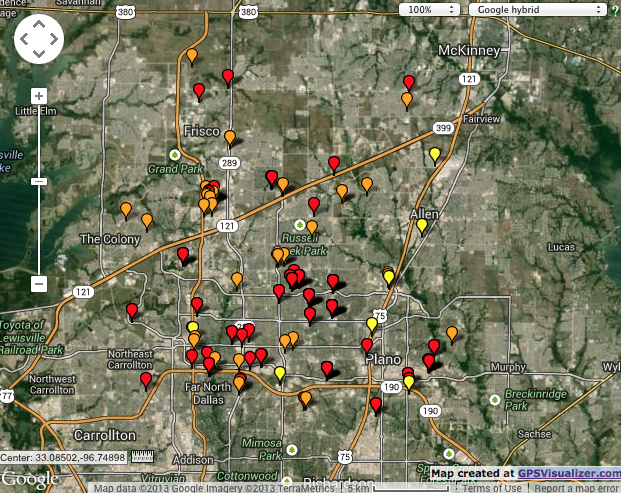T-Mobile’s new 20+20 LTE speeds visualized
Towards the back end of November, you may remember we published an article with information on T-Mobile’s faster 20+20 LTE network going live. Results were impressive, as one particular tower near Plano, Dallas showed speeds over over 70Mbps. Turns out, that’s far from being an isolated incident. Over the past few days, a variety of sites have picked up on an AllThingsD article, pretty much confirming what we already knew. Something we had already reported on. (For those of you who sent me a link to that article, that’s why I didn’t publish anything else on it. We already got there.)
Last night, however, Sascha Segan wrote up a very interesting article over at PCMag.com. In it was a really helpful map, sent to PCMag by T-Mobile with details of speeds and locations tested in the Dallas area. I grabbed a screenshot of the map, but, if you want to have a look at the interactive map in more detail, head on over to the original post.
Dallas is the first market in the States to get these new, faster LTE speeds, and has been made possible due to the merger with MetroPCS, and the usage of Metro’s AWS spectrum. In the speed tests, Category 4 devices like the Nexus 7 and Note 3 have been able to take advantage of this new network. Speed tests show results ranging between 70-100Mbps. As noted by Sascha:
“The 20×20 network runs on T-Mobile’s 1700MHz AWS spectrum. In cities where T-Mobile and MetroPCS had AWS allocations, the company is merging the two. In other cities, T-Mobile is moving customers on the slightly older HSPA+ network over to its 1900MHz spectrum to open up space on 1700MHz for more LTE, Castle said.”
We’ll forgive him for calling it “20×20”, but the rest of the information is pretty exciting. And it shows that Tmo is committed to ensuring it makes the best use of the extra spectrum required so far. It’s also worth noting that the company is ahead of schedule for its roll-out of 20+20 and 10+10 networks.
Over the next few months, we should see more of these 20+20 spots going live in a handful of key metro areas. So, if you live in a major U.S. city, keep an eye out and let us know if you spot any major increases.
Via: PCMag

